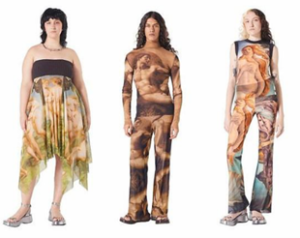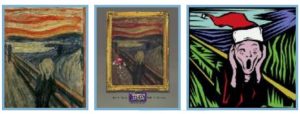In this collection, Jean Paul Gaultier features the image of Venus on dresses, blouses, trousers and scarves. The brand also used fragments of works by artists such as Michelangelo and Rubens.

As a result, the Uffizi is seeking 100,000 euros in damages from the French designer, who, according to the museum, used an image of the painting – which is on display in the museum – to create and market clothes without permission, without agreeing with the museum on how the image was to be used and without paying the relevant royalties.
Painted by Botticelli around 1480, The Birth of Venus is considered one of the masterpieces of the Italian Renaissance and is therefore of incalculable artistic value.
In its statement of claim, the Uffizi contends that, according to the Italian law on cultural heritage, “the use of images of Italian public property is subject to specific authorisation and the payment of a fee.”
While there may be specific cultural heritage legislation in Italy barring this kind of conduct, it would be correct and legally acceptable from an intellectual property perspective, given that the works in question have already entered the “public domain”.
In fact, copyright laws seek to strike a balance between the rights they grant to creators and the public’s right to access and use their works. Creators even have the opportunity to access and use the works of creators before them, to draw inspiration from these earlier works of art and to learn techniques that they can use to create works of their own.
The framework of public domain on the one hand and copyright on the other provides this balance between the rights of authors and the rights of the public. But what exactly is the public domain?
The public domain consists of all works that are not protected by copyright and can therefore be used without permission or payment to the original author. This means that works in the public domain can be copied, distributed, adapted, performed and displayed free of charge as if they belonged to everyone.
A work enters the public domain when
- the term of its copyright protection ends. This timeframe varies from country to country, but protection usually ends between 50 and 70 years after the creator’s death.
- it does not meet the conditions of copyright protection.
How Can Works in the Public Domain Be Used?
Works in the public domain can be used by anyone in any way. An example is “The Scream”, a painting by Norwegian artist Edvard Munch.
Since it entered the public domain, posters, art books, dolls, key rings, cartoons and countless other products have featured this painting.
The companies selling these reproductions have not had to pay royalties for the commercial use of this work, as it is in the public domain. Works in the public domain, such as Munch’s The Scream, can be copied, adapted and distributed free of charge by anyone.
Leaving aside the legal aspect of the conflict with Gaultier and focusing on the commercial one, it is striking that there are already garments with images of paintings produced by small companies or, for example, souvenir shops, which museums have not sued or sought compensation from.
The fact is that the number of people who buy this type of clothing is small. The success of Jean Paul Gaultier’s fashion campaign does not lie in the use of paintings by artists who died several centuries ago, but in the reputation of the French company’s brands themselves among consumers. What consumers are purchasing is Gaultier, not the clothes with images of paintings on them.

In any event, it will be interesting to see how this unusual and highly interesting court case plays out.